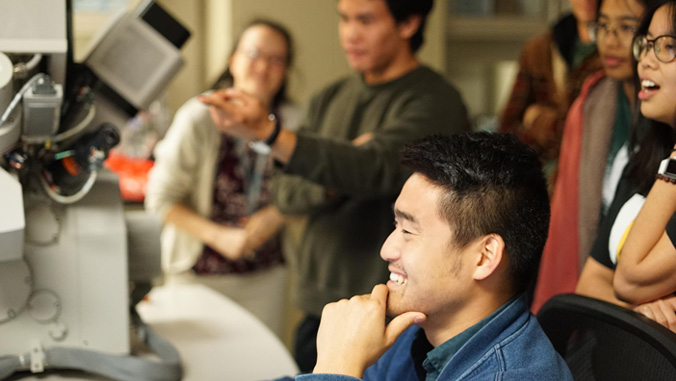
To increase diversity in cutting-edge materials research, education and professions, collaborating University of Hawaiʻi at Mānoa and University of Washington (UW) researchers were awarded $800,000 from the U.S. National Science Foundation (NSF).
This seed award from the NSF’s Partnerships for Research and Education in Materials (PREM) will support materials research partnerships between minority-serving institutions and large-scale, NSF-supported research centers and facilities.
“The anticipated outcome of this seed PREM is the sprouting of a strong interdisciplinary UH–UW collaboration centered around diverse student participants performing research at the frontiers to solve some of the world’s greatest materials research challenges, with the aim of successfully re-applying for a full PREM in the next round of proposals,” said Godwin Severa, principle investigator of the new grant and assistant researcher at the Hawaiʻi Natural Energy Institute (HNEI)in UH Mānoa’s School of Ocean and Earth Science and Technology.
The Materials Research and Education Consortium is composed of seven UH faculty from HNEI, the Hawaiʻi Institute of Geophysics and Planetology and the Colleges of Engineering and Social Sciences, as well as 10 faculty from UW Molecular Engineering Materials Center, an NSF Materials Research Science and Engineering Center.
Increasing underrepresented groups in materials science
PREM is intended to enhance and solidify a pathway for young researchers from underrepresented groups to enter the vibrant field of materials science and engineering.
Research activities of this new project maximize the complementary expertise and resources at both institutions while emphasizing the education and training of a diverse next generation of scientists and engineers. The research is focused on developing foundational knowledge about advanced nano-to-macroscale materials and properties controlling their unique behaviors, and investigating their use for future energy and space technologies.
The consortium’s PREM framework elements will include strong student dual-mentoring, including individualized professional development plans; annual student/faculty summer research exchanges; and joint research seminars and annual student symposia. The PREM pathway will increase the participation of underrepresented groups in materials science, especially Native Hawaiians, Pacific Islanders and women.
“Our long-term goal is to develop lasting research partnerships incorporating diversified student trainees, while offering first rate undergraduate and graduate degree programs in materials science at UH,” said Severa.
This program is an example of UH Mānoa’s goal of Enhancing Student Success (PDF) and Excellence in Research: Advancing the Research and Creative Work Enterprise (PDF), one of four goals identified in the 2015–25 Strategic Plan (PDF), updated in December 2020.
For more information, see SOEST’s website.
–By Marcie Grabowski

